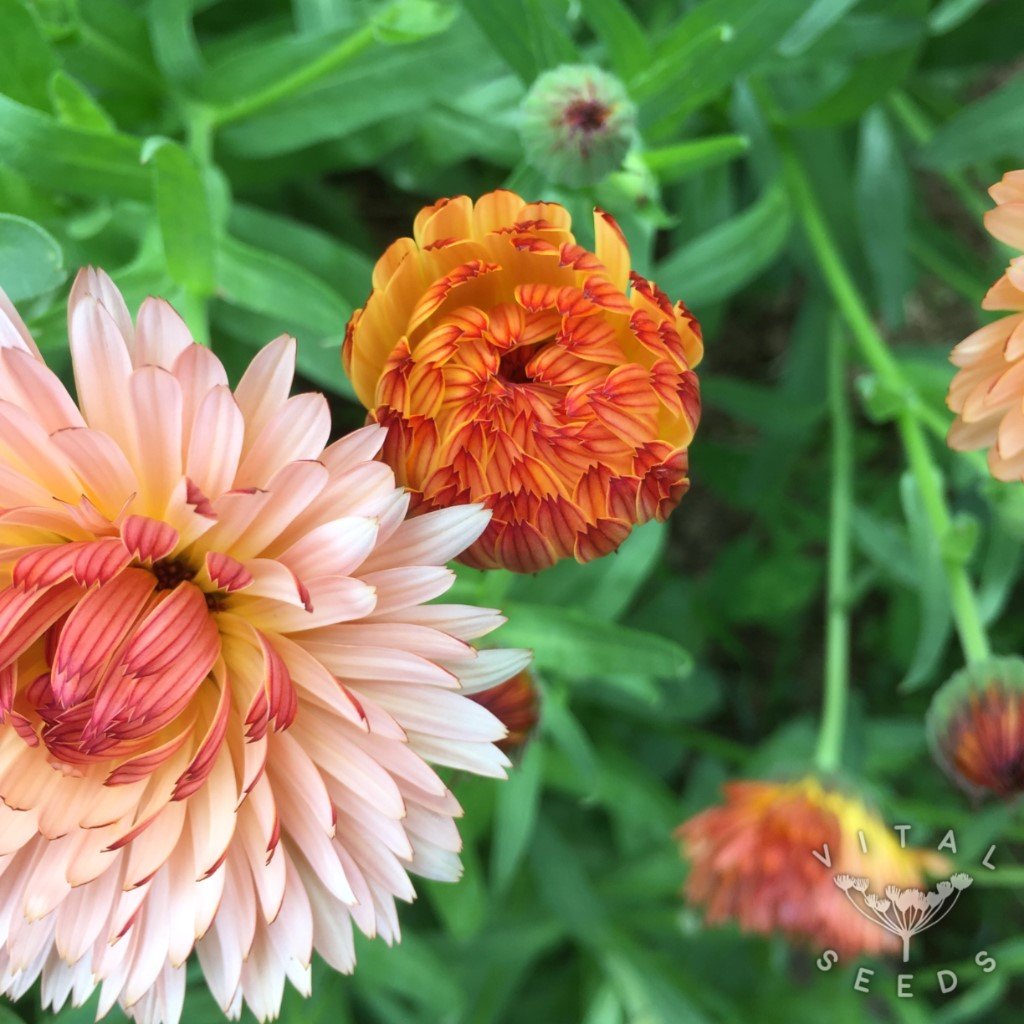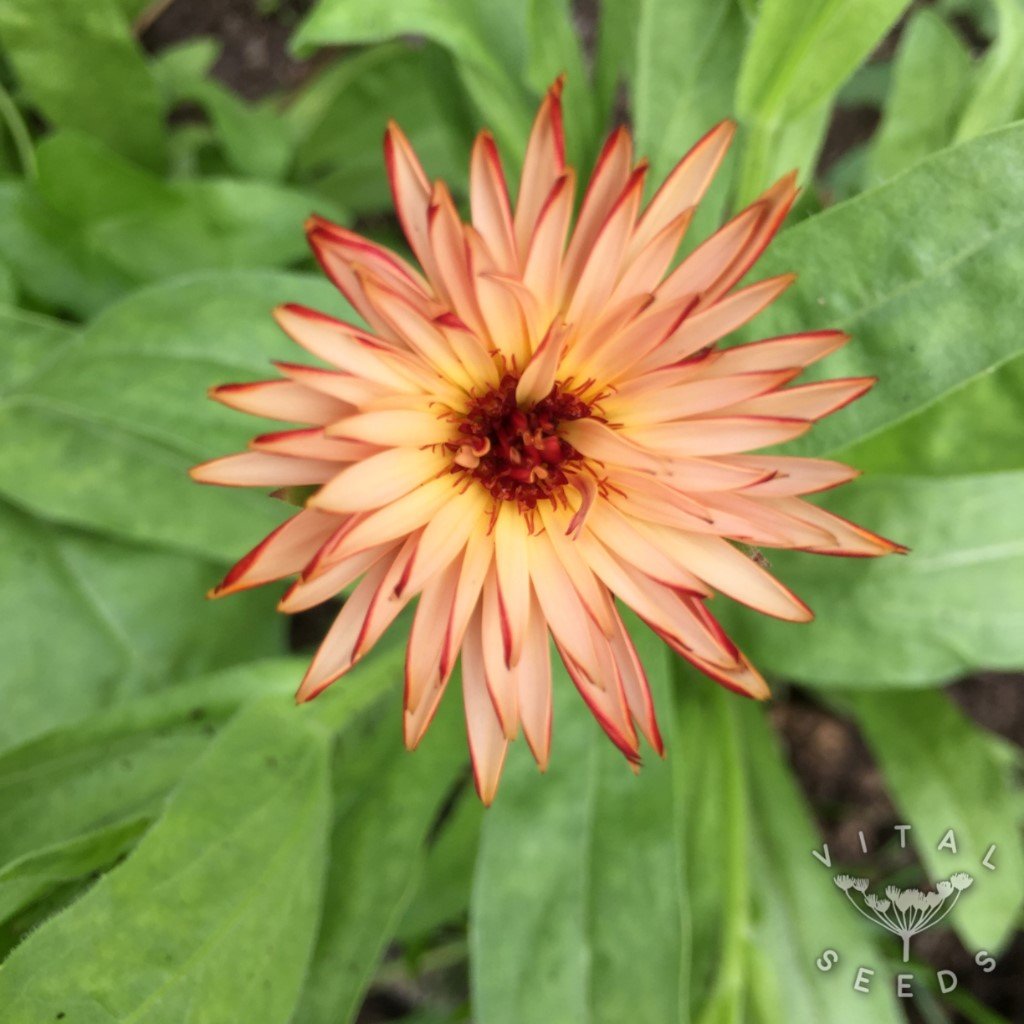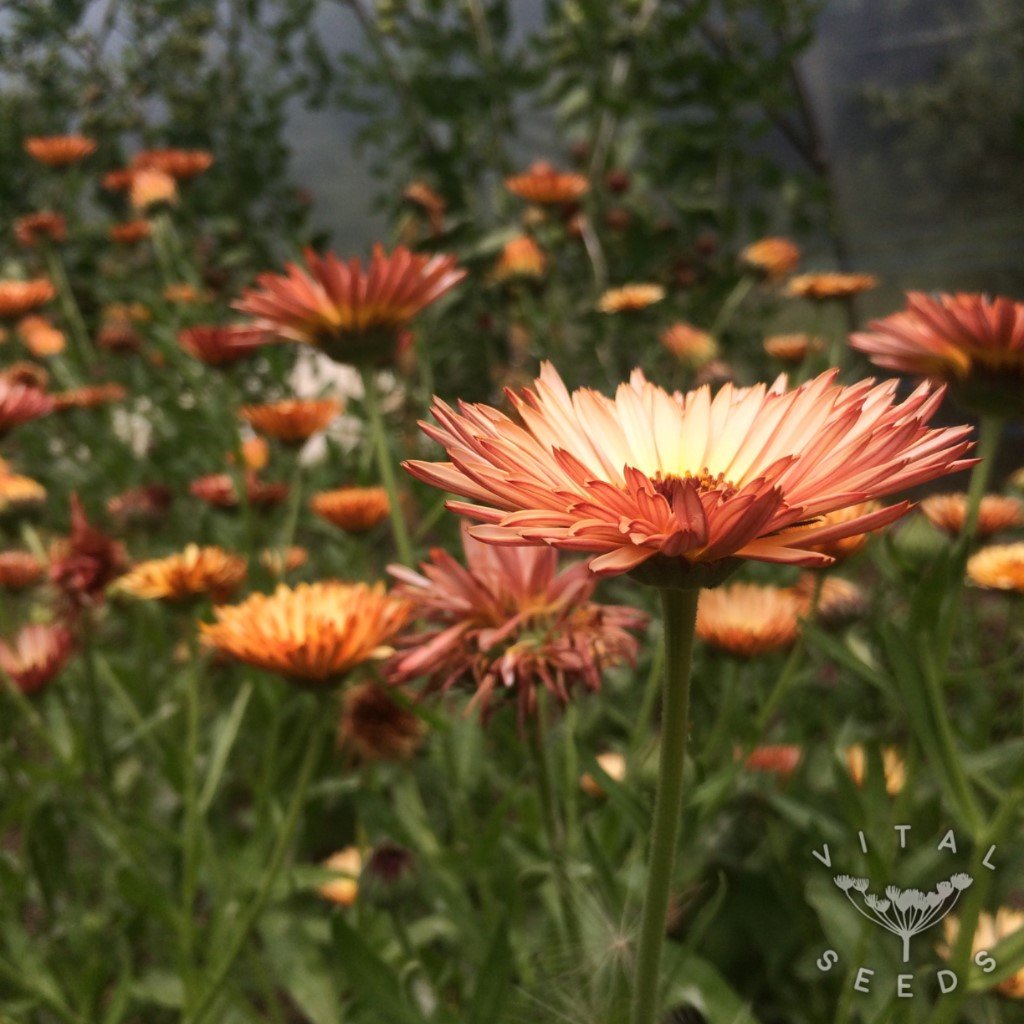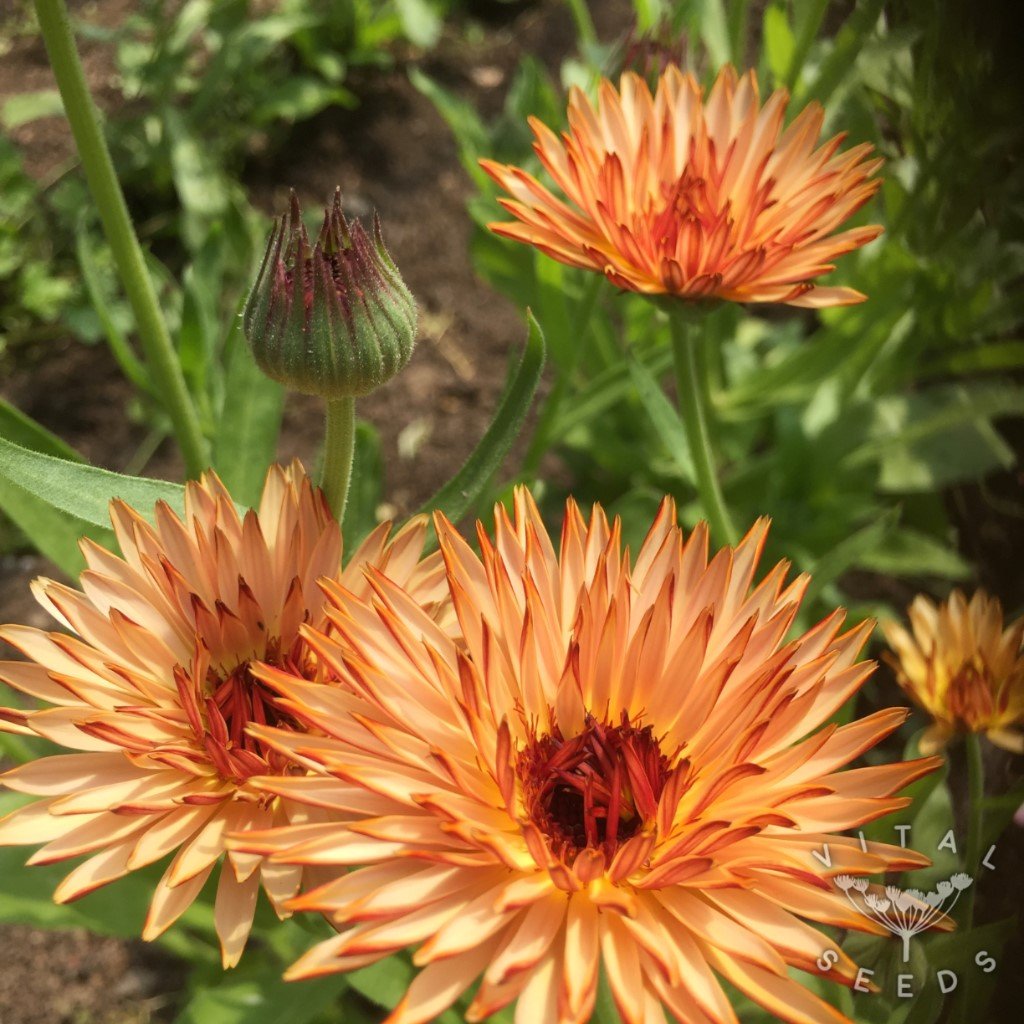Calendula – Triangle Flashback / Zeolights (Organic)
£2.58
A stunning version of the regular calendula with fully doubled blooms and of peach, gold and bronze petal colour. This calendula variety is a real treasure. Pastel shades of orange, pink and peach are tinged with yellow towards the petal base. The backs of the petals are maroon. A pure joy to look at. We were so excited to have found this strain of calendula, bred by Frank Morton from Wild Garden Seeds in Oregon, USA. The flowers don’t only look good in the garden or as cut flower, they are also edible and can be used for medicinal purposes, too. An abundance of beauty for your garden!
(Approximate seed count – 80)

In stock
Seed Sowing
Calendula is a hardy annual that can be sown in September to overwinter for early blooms in spring or from March to May. Sow seeds either in modules or direct 1 cm deep in rows around 30 cm apart.
Transplanting
Ensure your seedbed is free from weeds; sheltered sunny sites are best, they will tolerate some shade. Can be grown between taller plants and edges of beds to attract beneficial insects. They do prefer poor, free-draining soils.
Plant Care
Keep weed-free and watered during hot spells. You can mulch around the plants to keep in moisture and prevent weeds. Deadhead to prolong flowering and pinch out to create more bushy growth.
Challenges
Aphids like the flowering plants, but predatory insects easily find them on these bright blooms. Powdery mildew can also be an issue; avoid watering in the evening. Water the soil, not the plants and ensure there is enough airflow by not overcrowding.
Harvest
Pick the flower heads often to encourage more flowers to form; they should keep flowering well into autumn. Pluck off the petals and use fresh or dry for later use.
Culinary Ideas
Nothing is better than a sprinkle of bright petals on a salad; calendula has a mild flavor. They are a good source of vitamin A and C, can be used to decorate cakes, added to summer rolls, stirred into cooked rice, and overall make a great garnish. Dried petals can be added to herbal teas or used to make tinctures and balms.
Seed Saving
Calendulas will self seed in situ if left to flower and set seed. You will see the curved spiky tusk like seeds turn from bright green to brown; seeds vary in size and shade. Once the seed heads are brown, you can collect the whole heads to dry indoors for a few days before rubbing and separating the seeds from the chaff before storing in a cool, dry place.





